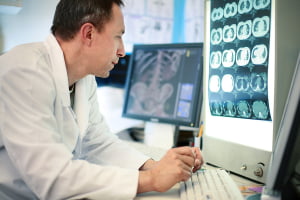Teleradiology Shows 140 Per Cent Productivity Boost
 In a similar vein to many other industries, remote working has been around for many years, but the coronavirus pandemic has forced the hand of many holdouts to quickly create the infrastructure and roll-out remote working and viewing technology.
In a similar vein to many other industries, remote working has been around for many years, but the coronavirus pandemic has forced the hand of many holdouts to quickly create the infrastructure and roll-out remote working and viewing technology.
It has now become an essential tool in the detection of COVID-19 pneumonia, which while not common in COVID-19 infections, chest radiography of critically ill patients can diagnose pneumonia, while radiologists working remotely can remain socially distant.
Prior to the pandemic, a program was developed to test the feasibility of remote radiology, which led to massive gains in productivity, high marks from clinicians, and a radiology department equipped and prepared for the outbreak of the coronavirus.
St. Mary’s Hospital – part of the Imperial College National Health Services Trust in London – commenced its pilot program in June 2019, hiring a 17-year experienced radiologist located in Sydney, Australia to study and interpret the scans for the United Kingdom’s radiology department’s overnight hours.
During the four-week pilot, virtual reporting productivity increased by 140 per cent, in comparison to the same number of in-hospital sessions completed prior to the intervention. Team members from multiple disciplines who worked with the remote service said it was ‘slightly’ better than usual.
The early success of the pilot scheme allowed the hospital to install further remote reading facilities for almost off of its consultant radiologists by the beginning of the coronavirus lockdown.
CIMAR provides advanced remote reporting solutions for the NHS and private sectors, giving radiologists the freedom to work remotely and massively improving their productivity. CIMAR is sync’d with a hospitals’ RIS and PACS for a seamless extension of local workflows. If you are looking for remote radiology reporting solutions, then get in touch today to see how we can help.